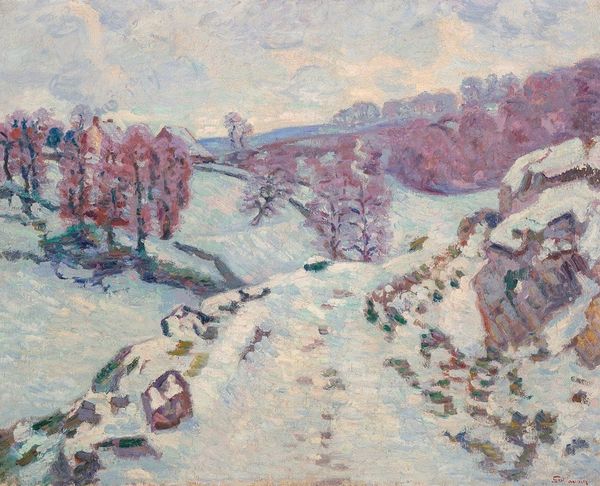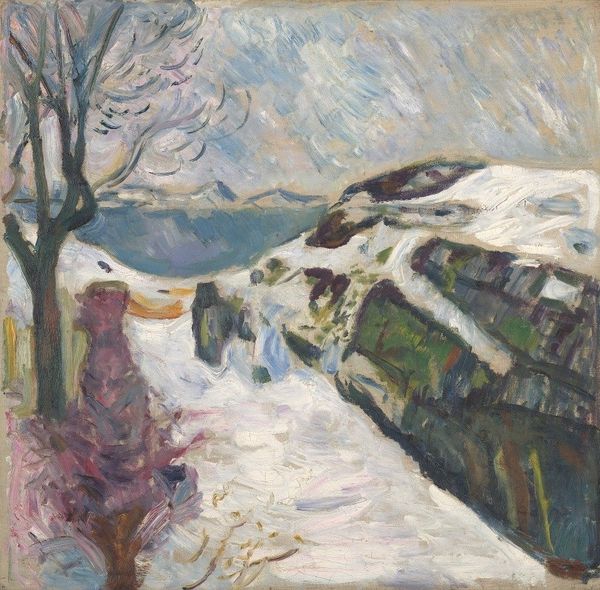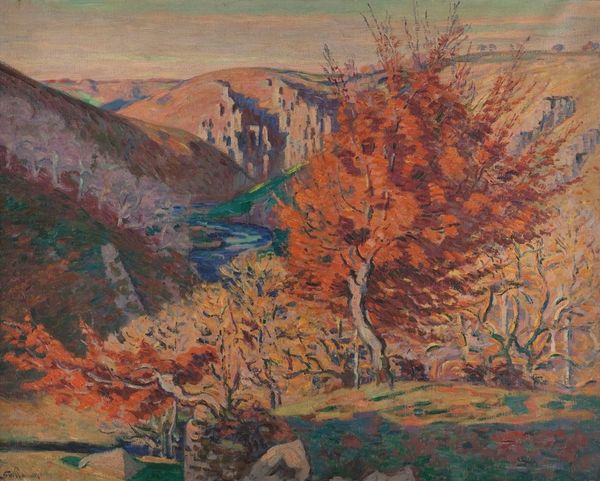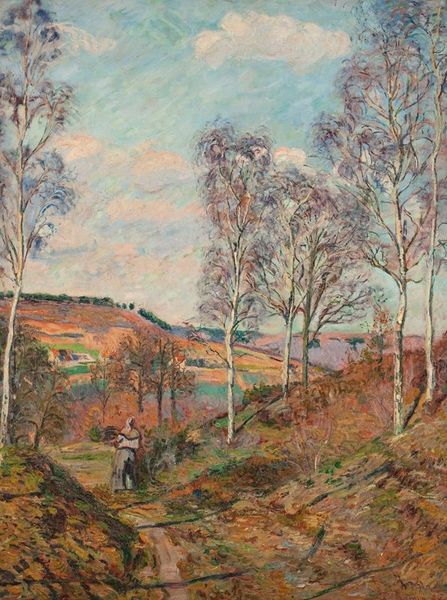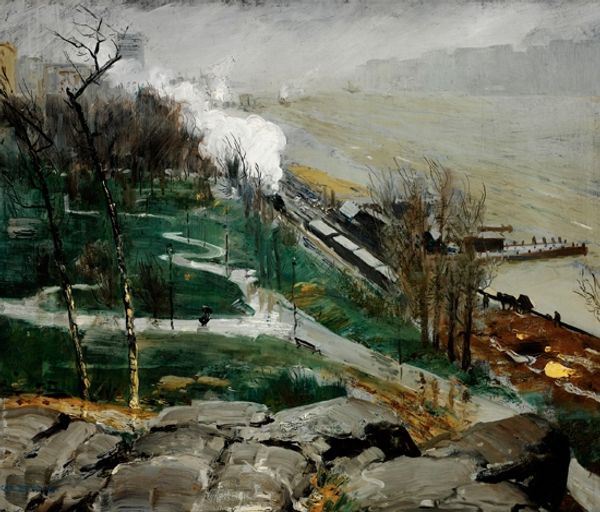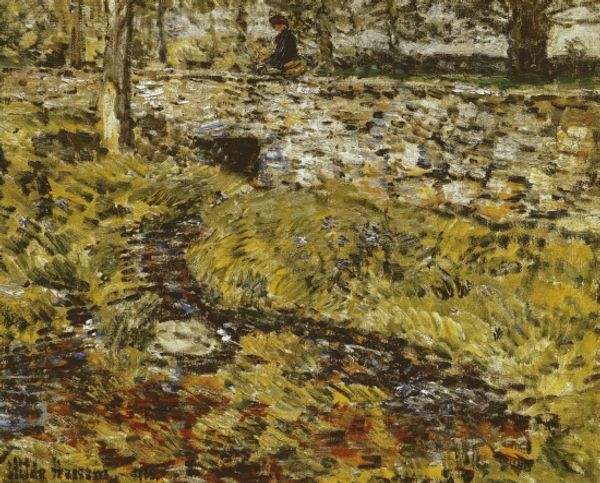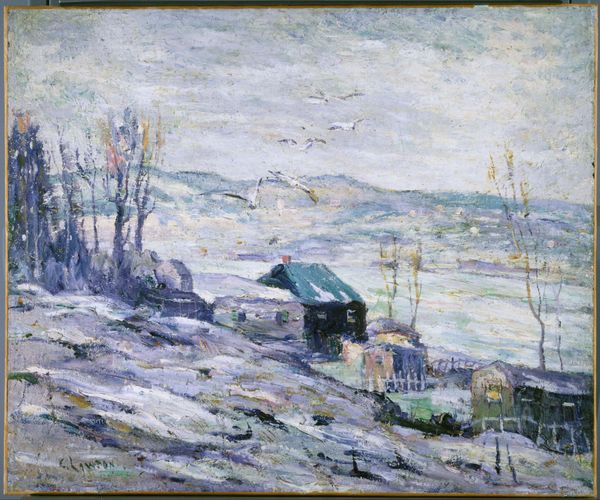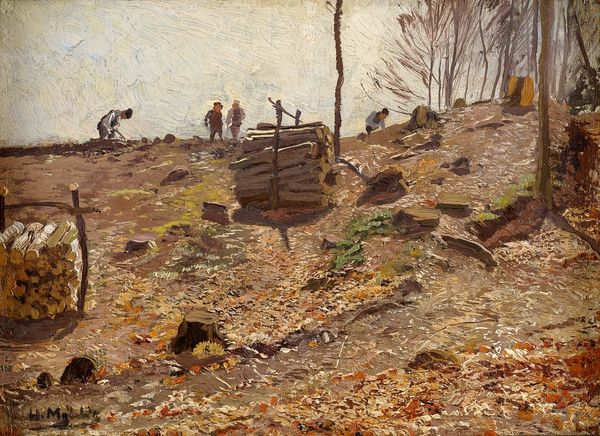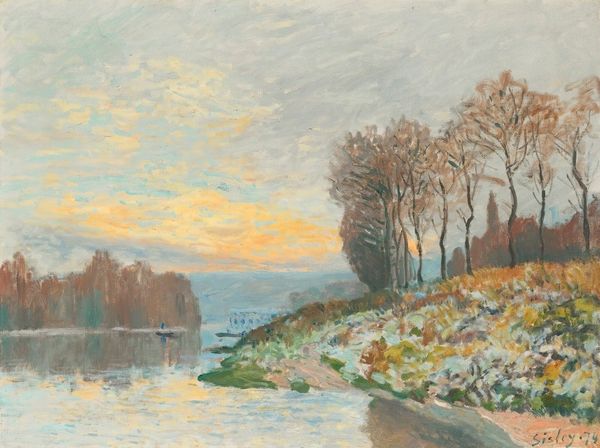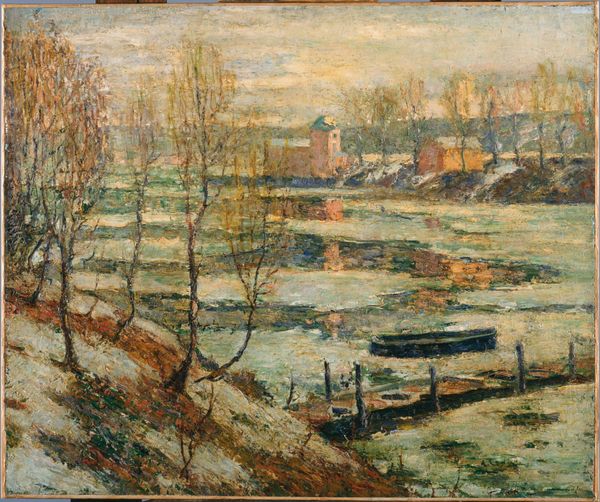
Copyright: Public domain
Ernest Lawson's "Road down the Palisades" presents a landscape rendered through a dense layering of paint, a surface alive with texture and color. The composition is structured by the road itself, a diagonal thrust leading the eye into the pictorial space, flanked by the rough, earthy tones of the hillside. Lawson’s technique—applying paint in thick, broken strokes—disrupts traditional representation, creating a visual field where color and form merge. This approach aligns with modernist concerns about the materiality of painting and its autonomy from illusionism. The road, a pathway through the landscape, is also a pathway into the very substance of paint. Lawson destabilizes the conventional landscape by emphasizing its constructed nature. The painting becomes an object, a site of visual and tactile experience rather than a window onto the world. Through this emphasis on materiality and structure, Lawson invites us to reconsider our relationship to both art and nature.
Comments
No comments
Be the first to comment and join the conversation on the ultimate creative platform.


